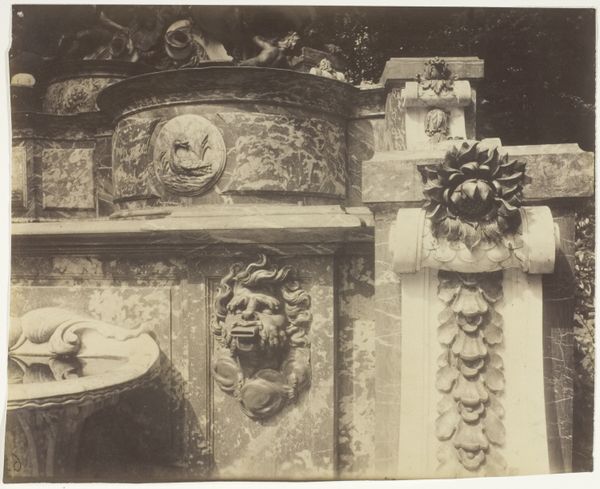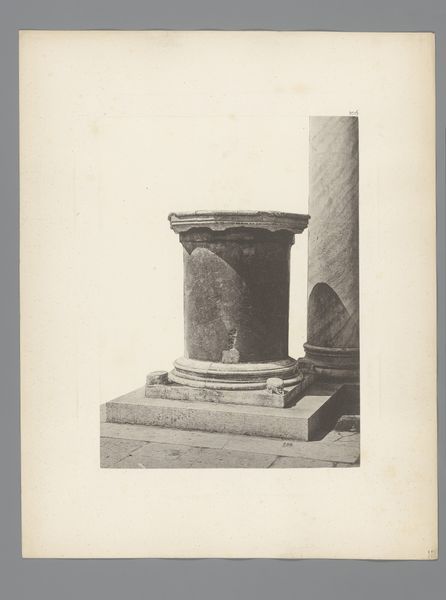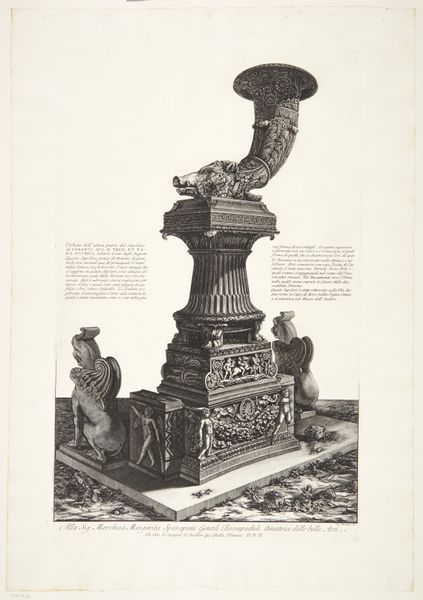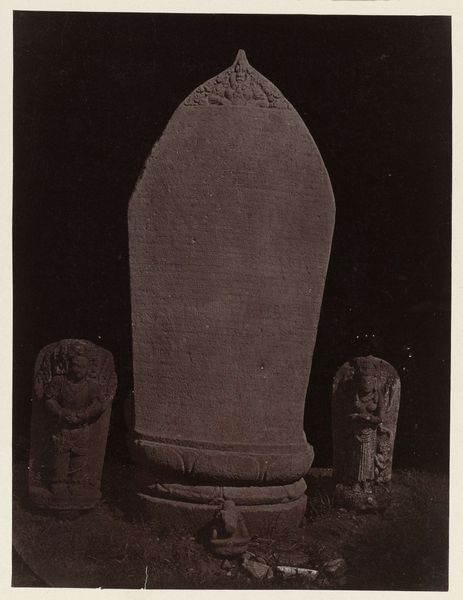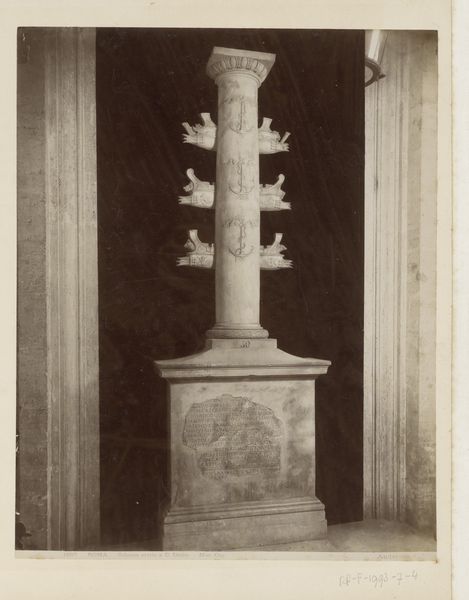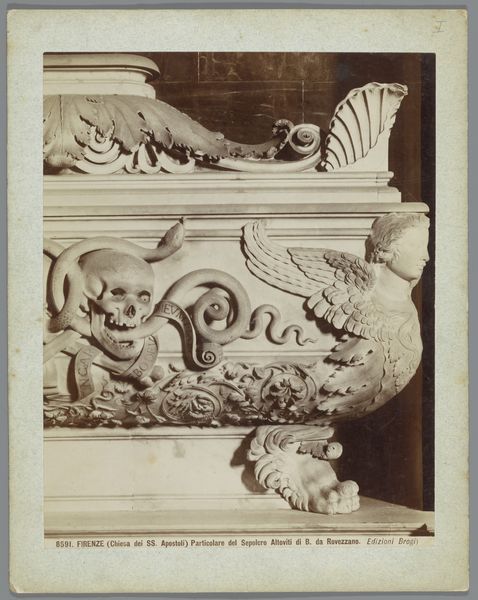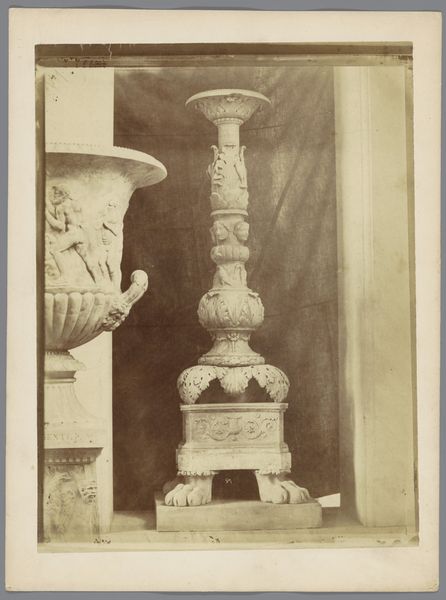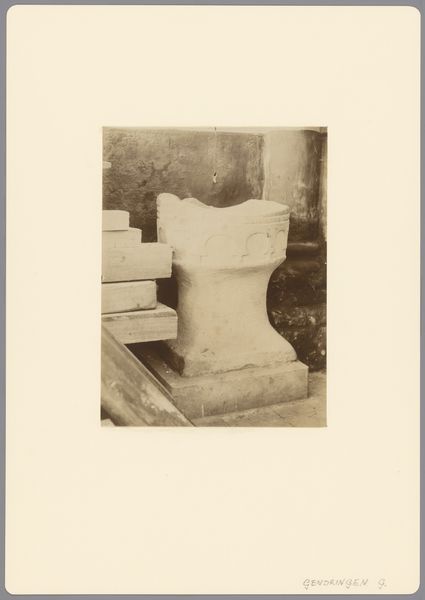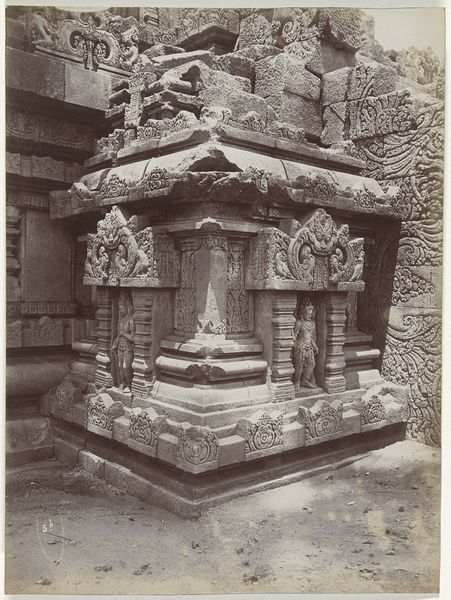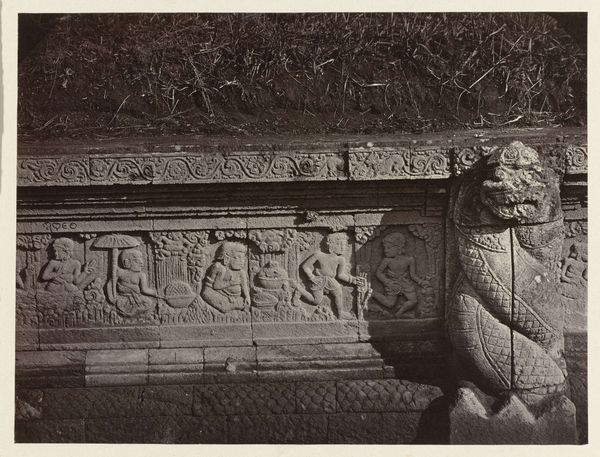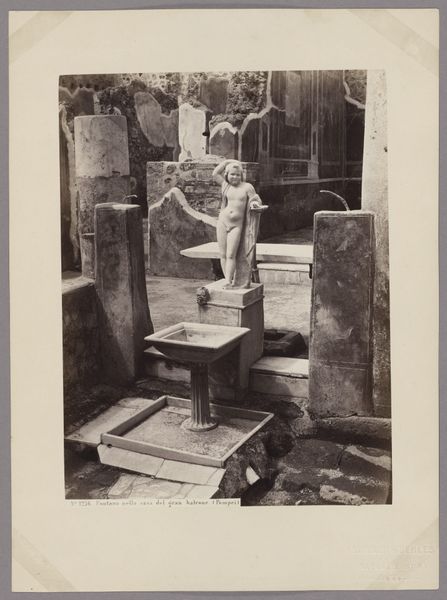
Yoni strutted by a naga, topped bij a non-contextual llinga (former Lichte collection). Yogyakarta, Yogyakarta district, D.I. Yogyakarta province, 9th century. Possibly 1865 - 1867
0:00
0:00
carving, photography, sculpture
#
carving
#
asian-art
#
landscape
#
figuration
#
photography
#
carved into stone
#
ancient-mediterranean
#
sculpture
#
19th century
#
statue
Dimensions: height 340 mm, width 290 mm
Copyright: Rijks Museum: Open Domain
Curator: This photographic print captures a stone carving, dating back to the 9th century, depicting what is described as "Yoni strutted by a naga, topped by a non-contextual linga". The photo was taken between 1865 and 1867 in Yogyakarta by Isidore Kinsbergen. Editor: It has such an austere, solemn presence. The texture of the stone, the weight of those carved details... It feels imposing, almost intimidating. Curator: Right. What we see here are core elements of Hindu iconography. The Yoni, representing the divine feminine, the naga – a serpent, symbolic of protection, and the linga, the symbol of masculine energy and the god Shiva. Editor: And consider the cultural context! Kinsbergen, a European photographer, capturing these ancient symbols in 19th-century Java. What was he thinking as he framed this shot? Was it simply documentation, or was there an element of exoticism at play for a Western audience? Curator: The labor involved in producing something of this size must have been substantial. Each carved detail and placement tells a story of dedication to this craft, showing this art has a strong connection with its original means of production and social structures. Editor: Absolutely. The naga figure supporting the Yoni seems almost burdened. Does this indicate the weight of responsibility placed upon feminine power, or is it a tribute? The symbolism here is incredibly rich and complex. Curator: Remember, too, that images, especially religious ones, carry power. A photograph, at this time, might alter these symbols in unforeseen ways due to wider distributions. The consumption of the East by the West, you might say, now captured and repackaged. Editor: I keep coming back to the emotional impact of those serpentine features. It projects more of a defensive or fierce spirit than a supporting role. It’s all quite layered, isn't it? Curator: Yes, quite. When analyzing through the materiality and placement of the carvings, they open up unique ways of understanding religious devotion and power at the time of their original usage. Editor: Seeing how images change their impact and utility by recontextualization makes me question what they mean to people now. What did that snake become outside its original place? Curator: The image invites us to ponder about the shifts of production and symbolic interpretation over time and their impacts on society, which makes us think, doesn’t it? Editor: Indeed. The weight of history, literally carved in stone, presented through the lens of another history of its own. Food for thought.
Comments
No comments
Be the first to comment and join the conversation on the ultimate creative platform.

